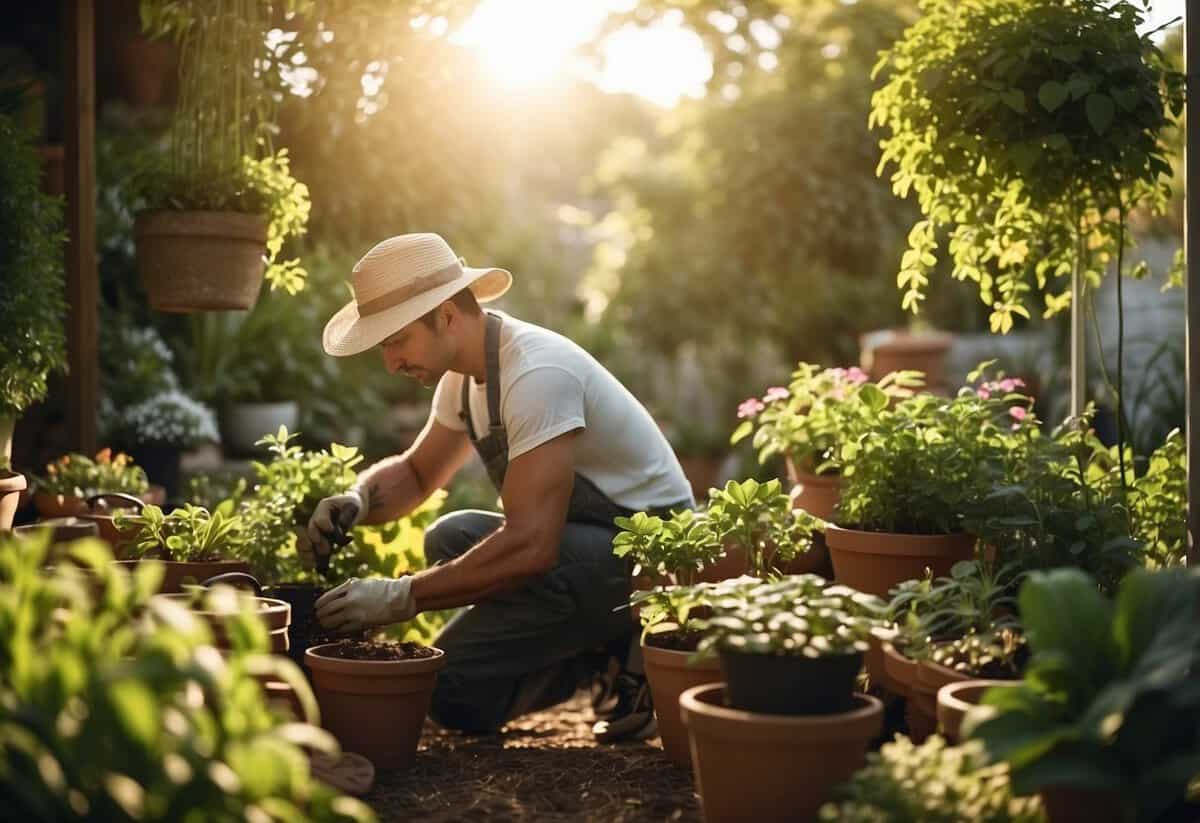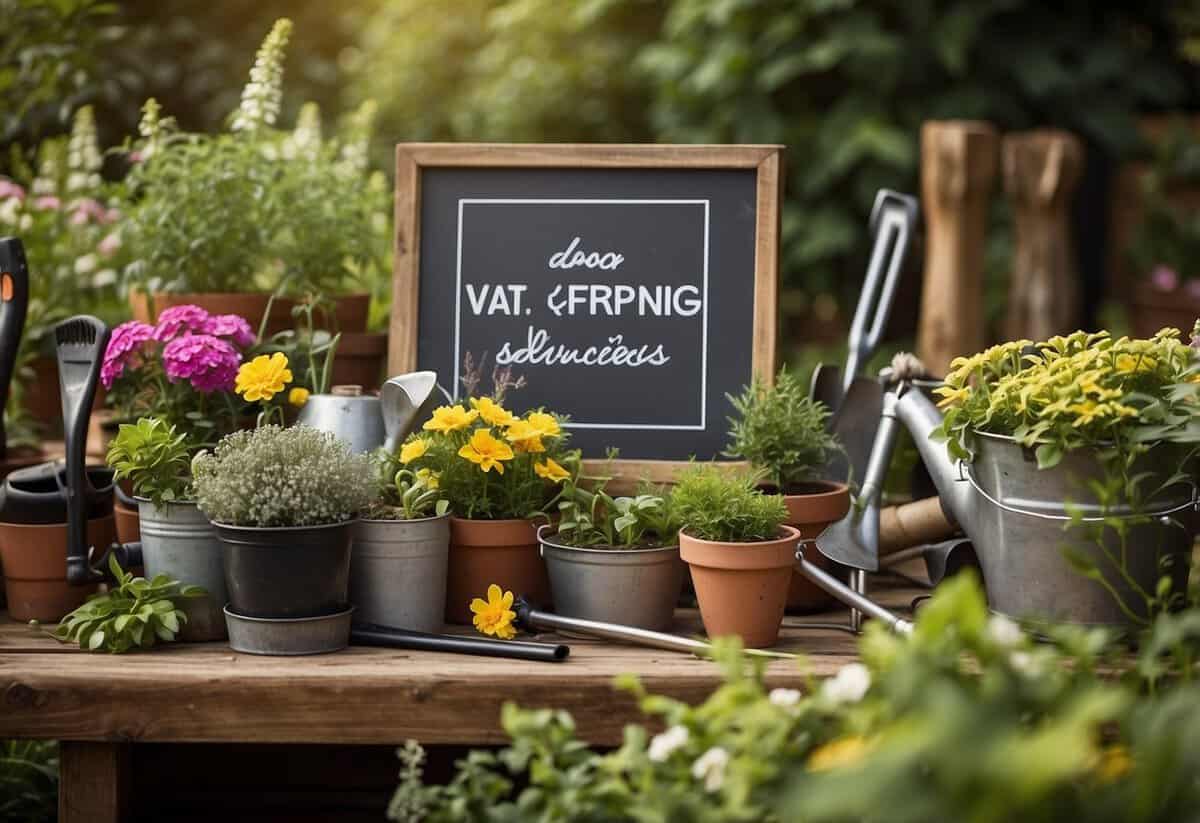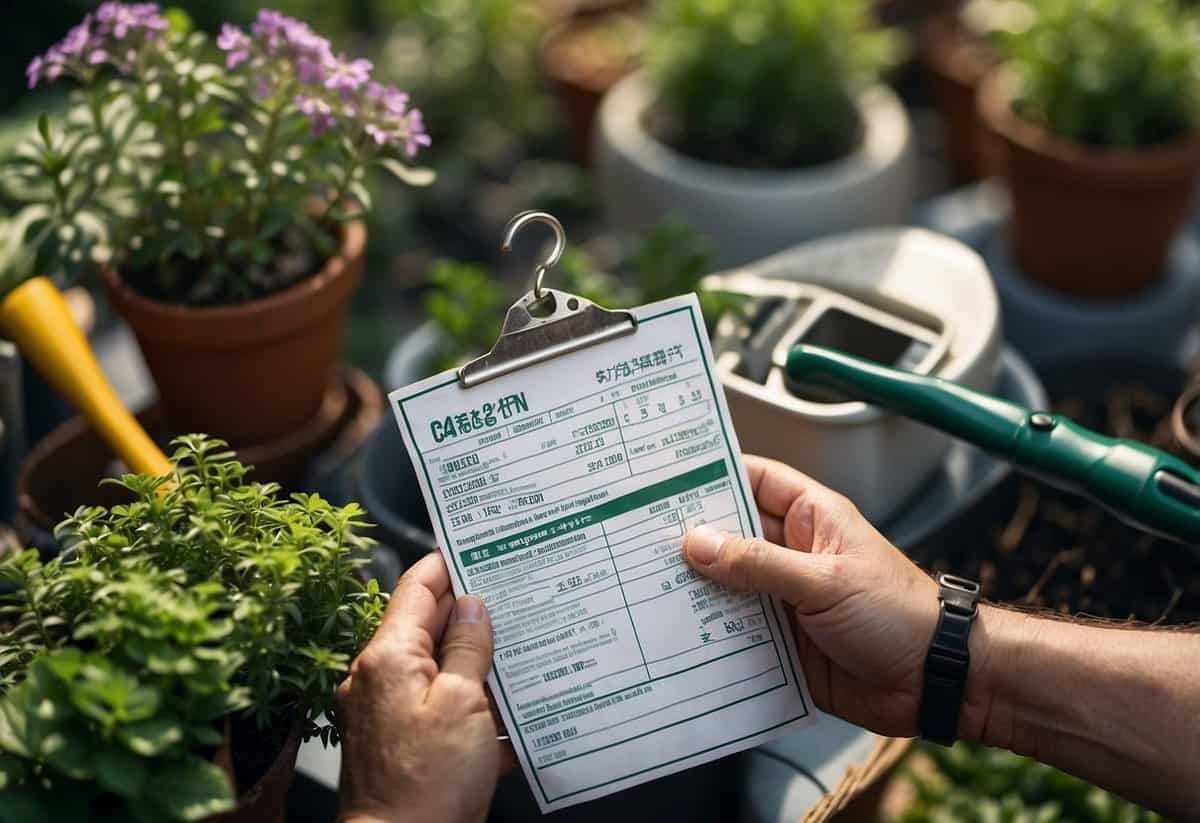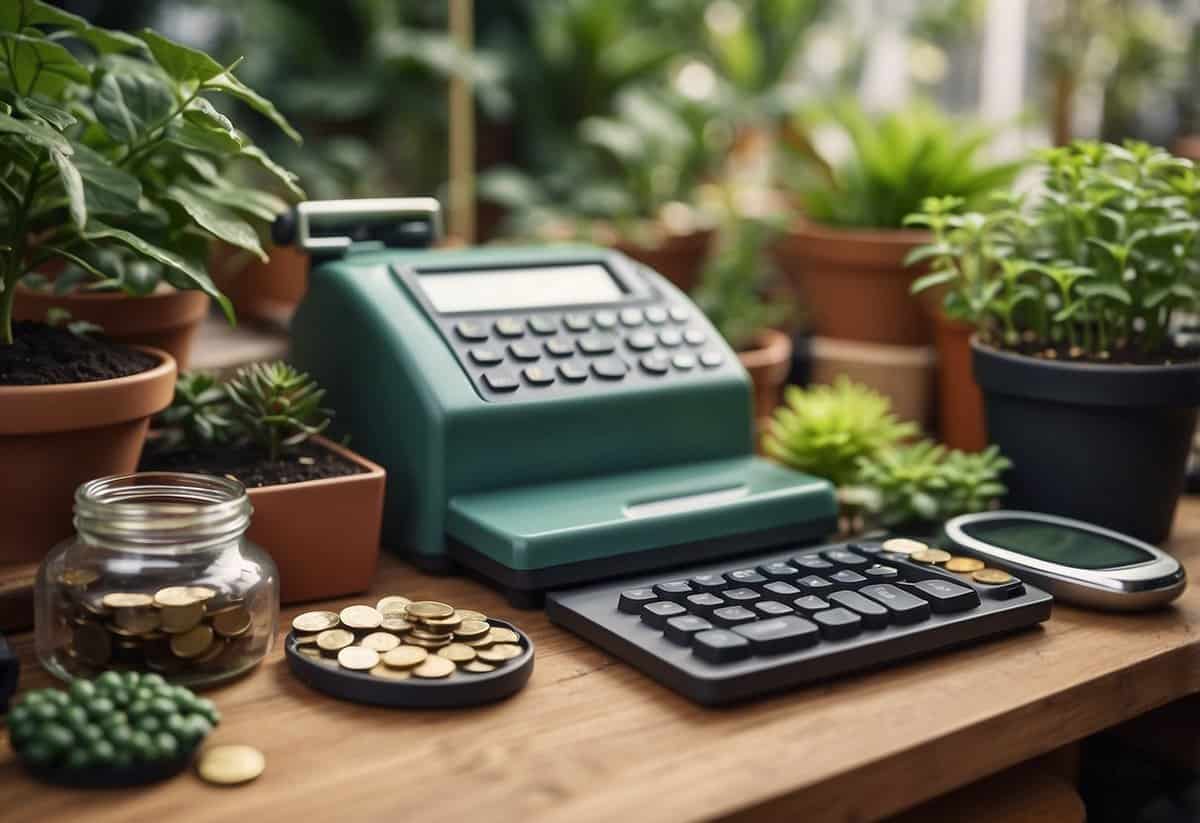Do Gardeners Pay VAT? A Quick Guide for Green Thumbs
Ever wondered if you, as a gardener, need to deal with Value Added Tax (VAT)? In the UK, gardeners usually have to charge VAT if their annual turnover exceeds £85,000. This means that if you make more than this amount in a year from your gardening services, you must register for VAT and add it to your service costs.

Why does this matter to you? Well, charging VAT means adding an extra 20% to your prices, which might affect your customers’ willingness to pay. But it also means you can reclaim the VAT you pay on goods and services used in your business. For many gardeners, this can be a significant benefit.
There are exemptions and specific rules, especially for certain types of work like zero-rated seeds. Understanding when these apply can help you manage your tax obligations efficiently and keep your business thriving.
Understanding VAT in Gardening Services

Gardening services are subject to Value Added Tax (VAT) in many cases, and it is important to understand how VAT affects your business. This section explores the basics of VAT, when registration is required, and the differences between various VAT rates.
Basics of Value Added Tax
Value Added Tax (VAT) is a consumption tax added to the price of goods and services. It is collected at each stage of the supply chain. For gardeners, this means VAT must be charged on services provided to clients.
VAT is charged as a percentage of the total service fee. In the UK, the standard VAT rate is 20%. When you charge VAT, you will need to document this on your invoices and pay the collected tax to the HM Revenue and Customs (HMRC).
Gardening services, like other services, are subject to this tax unless they qualify for specific exemptions or reduced rates.
VAT Threshold and Registration
You must register for VAT if your business’s taxable turnover exceeds the VAT registration threshold. As of 2024, this threshold is £85,000. If your earnings are below this threshold, registering is voluntary.
Once registered, you must charge VAT on all eligible services and complete regular VAT returns to HMRC. Failure to register when required can lead to penalties and backdated VAT demands. It’s wise to keep track of your turnover to ensure you register at the appropriate time.
Being VAT registered can also allow you to reclaim VAT on business expenses, which can offset the amount you owe HMRC.
Differences between Zero-Rated, Reduced Rate, and Standard Rate
Gardening services can fall under different VAT rates. The standard rate is 20%, which applies to most services. However, there are two other rates to be aware of:
-
Zero-rate: Some services might qualify for 0% VAT. This typically includes specific goods and exports but rarely applies to routine gardening services.
-
Reduced rate: A 5% VAT rate is applied to certain services, such as energy-saving installations. This usually does not apply to general gardening services.
Understanding these rates helps in correctly applying VAT to your services, ensuring compliance with tax regulations. Always check with HMRC or a tax professional if you’re unsure about the correct rate for your services.
VAT for Different Types of Gardening Services

Different gardening services have specific VAT rules. Knowing what VAT applies can help you manage costs and understand pricing better.
Landscape Works vs Maintenance Services
Landscape works like new planting, turfing, and creating garden designs are often subject to VAT. For new builds, some types of soft landscaping can be zero-rated. Zero-rated activities might include planting trees, shrubs, and laying grass on new housing projects.
Maintenance services such as lawn mowing, weeding, and pruning are typically standard-rated at 20%. This includes regular garden upkeep needed to maintain a property’s appearance over time. Even though these services might seem like landscaping, the tax rules usually classify them differently.
Tree Services and Planting
Tree services involve activities like tree surgery, pruning, and removal. Most of these services are standard-rated because they’re considered part of garden maintenance. Tree surgery includes complex tasks like cutting off hazardous branches or removing entire trees, which need specialized skills and equipment.
Planting relates to adding new plants to a garden. If this is part of landscaping for a new build, it may be zero-rated under certain conditions. But regular planting and replanting in established gardens will attract the standard 20% VAT. Understanding these differences helps ensure proper billing and cost planning.
Specific VAT Rules for Gardeners

When dealing with VAT as a gardener, it’s important to know the rules that apply to your work. These rules can vary depending on the type of gardening you do, especially whether your work is related to building sites or producing food.
VAT Notice 708 for Buildings and Construction
According to HMRC’s Buildings and Construction (VAT Notice 708), certain landscape works can be zero-rated for VAT. These include soft landscaping work like turfing, planting trees, shrubs, and grass on new housing developments.
To qualify, your work must be “closely connected” to the construction of the building. This means your landscaping activities must be done during the construction phase and must align with the planning authority’s consents and conditions. For instance, this can include replacing trees and shrubs as part of a required planning consent condition.
You must ensure your work is part of the construction project and happens before the building receives a certificate of completion. This means the building must not yet be habitable or fit for purpose when you do your landscaping.
Dealing with VAT for Human Consumption Produce
If your gardening business involves growing produce for human consumption, like seeds, plants, and crops, specific VAT rules apply. According to VAT Notice 701/38, seeds and plants that produce food for humans or animals, such as vegetables and fruit, can be zero-rated.
You won’t need to add VAT when selling edible vegetables, fruit, seeds, or plants meant for food production. This can significantly impact your pricing and the attractiveness of your goods to consumers.
However, if your gardening focuses on ornamental plants and elements merely for decorative purposes (ornamental effect), these items will typically be subject to the standard VAT rate of 20%.
Important Terms to remember:
- Human consumption: Applies to VAT zero-rating.
- Ornamental effect: Generally subject to standard VAT rates.
- Seeds, plants, and spores: Check their use to determine VAT status.
Understanding these rules helps you make informed decisions about your pricing, tax obligations, and potential exemptions.
Managing VAT for Professional Gardeners

Managing VAT can seem complicated, but it’s essential for professional gardeners. Key tasks include calculating costs, issuing proper invoices, ensuring timely VAT returns, and recognizing potential fraud.
Calculating Costs and VAT Invoices
When you provide gardening services, you need to add 20% Value Added Tax (VAT) to your fees. To do this, multiply your costs by 1.2. For example, if your hourly rate is £30, the total cost with VAT will be £36.
Creating VAT invoices is crucial. Invoices should include the total amount, the VAT added, and your VAT registration number. Clearly list the cost of each service and the corresponding VAT amount. This ensures your clients know exactly what they are paying for.
Keeping detailed records helps you accurately calculate your VAT and track payments. It also simplifies your VAT returns process.
VAT Registration and Returns
As a gardener, you must register for VAT if your annual turnover exceeds £85,000. Once registered, you need to submit VAT returns, usually every quarter. These returns detail the VAT you have collected from your customers and the VAT you have paid on business expenses.
An accountant can help you with the registration process and ensure your returns are accurate. They can also advise on reclaiming VAT on expenses like tools, plants, and fuel. Timely and accurate VAT returns prevent penalties and keep your business compliant.
Keeping track of your VAT through detailed records is vital for smooth operations. Software can assist with this by automating parts of the process.
Preventing and Recognizing VAT Fraud
VAT fraud occurs when you incorrectly charge or claim VAT. To prevent fraud, always issue correct invoices and avoid cash deals that might not be properly recorded.
Remain vigilant by regularly reviewing your VAT transactions. Look for discrepancies, such as unusually high or low amounts. Training your staff to recognize fraud signs can also help.
If you suspect VAT fraud, it’s important to act quickly. Report it to the appropriate authorities to avoid legal troubles. Your accountant can give guidance on best practices to ensure all your VAT dealings are legitimate.
Practical Tips for Gardening Customers and Businesses

If you’re considering hiring a gardener or are a landscaping business, knowing how VAT affects your projects can save you money and help ensure smooth transactions. Here’s what you need to know.
Engaging a VAT-Registered Gardener
Hiring a VAT-registered gardener can impact the final cost of your project. VAT stands for Value Added Tax, and it usually adds 20% to the price of services and goods. This means projects like patios and paths could cost more if your gardener is VAT-registered.
As a consumer, always ask for a detailed invoice. This should clearly show the service cost and the VAT amount. For big projects, knowing the VAT costs upfront can help you budget better.
Businesses should keep their turnover in mind, as surpassing the £85,000 threshold requires VAT registration. If you’re a gardener, being transparent about VAT charges builds trust and avoids misunderstandings.
When to Seek Professional VAT Guidance
VAT can be complicated, and the rules may differ for various types of works, such as newly constructed properties. Sometimes, clients may request specific VAT treatments. For instance, some landscaping projects for self-build properties might qualify for zero-rate VAT.
If you’re unsure about VAT regulations, consulting a professional can prevent costly mistakes. Whether it’s understanding how to invoice properly or knowing if certain expenses are VAT deductible, expert advice can be invaluable.
For gardeners, include VAT in your pricing strategy, especially when dealing with high-overhead items like machinery and materials. This will help ensure your business remains profitable and compliant with tax laws. For further reading, you might explore specific cases and examples related to your trade.







